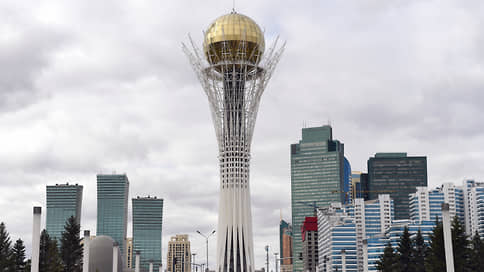Russian investors invested $13 billion in 99 projects in Kazakhstan
[ad_1]

The increase in Russian investments in the EAEU countries and their neighboring states led to an additional increase in investments in Kazakhstan – the country accounted for 23 of the 28 new projects launched in the EAEU since the beginning of 2022. The country is also the main recipient of foreign direct investment from third countries – primarily China, but the latter’s share in the total volume of investments is gradually being eroded against the backdrop of growing investments from Turkey and Arab states.
The total volume of accumulated mutual direct investments of the countries of the Eurasian region (EAEU, as well as Azerbaijan, Uzbekistan, Moldova, Georgia, Tajikistan and Turkmenistan) by the end of the first half of 2023 amounted to $48.8 billion, of which mutual FDI of the EAEU countries – $28.1 billion, assessed by the Eurasian Development Bank (EDB). In 2022, mutual FDI in the region grew by 5.4% (the base includes investments over $1 million).
The Russian Federation’s capital investments in the region amount to $43 billion, the majority of which falls on Kazakhstan – $13 billion was invested in 99 projects, followed by Uzbekistan (26 transactions worth $9.3 billion – more than 90% of investments account for four oil and gas projects) and Belarus ($5.65 billion , these are investments of Gazprom, Russian banks, as well as investments in IT).
Since the beginning of 2022, the largest transaction has been Rosatom’s acquisition of 100% of the Stepnogorsk Mining and Chemical Plant from the offshore companies Ganberg and Gexior Limited, and in the opposite direction, the investment of Kaz Minerals in the Baimskaya copper project in Chukotka. Of the 28 new projects within the EAEU since the beginning of last year, 23 were implemented in Kazakhstan, four in Russia and one in Kyrgyzstan. Kazakhstan accounts for 27% of the total investments of the countries of the region; in total, 12 out of 20 new projects worth $1.1 billion are associated with the participation of Russian investors this year.
The authors of the report expect that the influx of Russian capital investment into the region will not weaken: investments that companies wanted to direct towards expansion in Western markets will likely be redirected to the EAEU and Central Asia. At the same time, investments in the financial sector and telecom may decline further – the exit of Sberbank and Alfa Bank from the Kazakh market has already led to a decrease in the volume of mutual investments by $825 million.
Among external investors, mutual FDI of the countries of the region with Turkey is growing fastest – $68.1 billion, of which investments in the region amount to $16.8 billion (most investments are in the Russian Federation, $7.4 billion, in the opposite direction – $33 billion, followed by Azerbaijan and Kazakhstan).
China remains the largest investor – $79.9 billion, but in the countries of Central Asia, which received $55.9 billion, its share is decreasing (in 2016 it amounted to 95.8% of foreign investments, now – 87.9%), Russian investments in these countries amount to $23.8 billion, but the share of investments by state companies in Russian FDI in the region is significantly lower (30% versus 90%). The decline in China’s share is associated with a significant increase in FDI from Turkey (from $1.3 billion to $4.4 billion) and the UAE (from $745 million to $3 billion) from 2016 to the first half of 2023. Egypt, Iran, Qatar and Saudi Arabia account for less than 1% of investment in the region.
Among the recipient countries, the largest (as in the case of regional investments) is also Kazakhstan: the volume of investments in 118 of its projects amounted to $46 billion, 31 projects worth $4.1 billion are being implemented in Uzbekistan, 23 for $1.8 billion are being implemented in Kyrgyzstan, Tajikistan – 18 for $2.3 billion, in Turkmenistan – two projects for $9.4 billion. China invested the most in Kazakhstan ($41.9 billion, this is 52% of mutual investments) and Russia ($19.7 billion, 25%).
Investors from friendly countries (primarily from China) invest in raw materials (48% of investments), transport and warehouses (pipelines, airports, dry port – 30.6%) and processing (8.5%), other areas account for less 5% investment.
Of the 35 projects in the raw materials sector, 33 are Chinese; investments from Turkey and Iran in this sector do not exceed $27 million. Among transport projects, eight are being implemented by China and three by Turkey. Arab investors are entering green energy projects in Kazakhstan and Uzbekistan.
Note that, according to the Ministry of Commerce of the People’s Republic of China, the country’s accumulated foreign investments for 2021 amounted to $518.2 billion, of which the EAEU countries accounted for $20.3 billion, and Central Asia — $13.7 billion. The volume of Chinese FDI in Russia amounted to $10, 6 billion, to Kazakhstan – $7.5 billion, to Uzbekistan – $2.8 billion, to Tajikistan – $1.6 billion, to Kyrgyzstan – $1.5 billion, to Belarus – $646 million. At the same time, the accumulated direct investments of China in Russia, according to official statistics, decreased from $13.9 billion in 2017 to $10.6 billion in 2021 (from 3.3% to 2.1%).
[ad_2]
Source link






